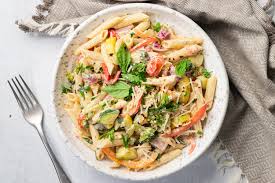Low carb food
Reducing the number of carbs is the best way to lose weight. Carbs have been blamed for causing the current obesity epidemic. However, not all carbs are created equal. Processed junk foods high in sugar and refined grains are unhealthy and fattening — while whole, fiber-rich foods are healthy. Although low-carb diets can be beneficial for some people, you should not necessarily avoid all high-carb foods. It tends to reduce your appetite and cause “automatic” weight loss, without the need to count calories. This means you can eat until full, feel satisfied and still lose weight. The dietary guidelines recommend that carbs provide 45 to 65 percent of your daily calorie intake. So if you eat a 2000-calorie diet, you should aim for about 225 to 325 grams of carbs per day. But if you need to lose weight, you will get much faster results by eating around 50 to 150 grams of carbs. A popular alternative called the low-carb diet is much more effective for weight loss than the high-carb diet that has been recommended for the past few decades.
This diet restricts your intake of carbohydrates like sugars and starches (bread, pasta, etc.) and replaces them with protein, fat and healthy vegetables. Studies show that low-carb diets reduce your appetite and make you eat fewer calories and lose weight pretty much effortlessly, as long as you manage to keep the carbs down.
Imagine if you could tell your friends you’re on a hot new diet, the one all the celebs are doing for rapid weight loss. Its name? It’s The Complex Carbohydrates Diet. Yes, it’s true: You can slim down by eating carbs if you eat the right ones. Add these essential carb choices into your daily diet and stay fueled and fat-burning all day long—without sacrifice.
As a cereal grain, barley may have the ability to increase the levels of a hormone tied to satiety. A Swedish study discovered that boiled barley can change bacteria in your gut, which in turn can boost your metabolism. Researchers also found that this fiber-rich starch was shown to "decrease hunger sensations".You can add this nut-like food to your diet by using it in baked goods and breakfast items, or tossing it in salads and soups. It’s not only good for your health but also a killer appetite suppressant that can help keep your six-pack diet on track all day. Barley contains a whopping 6 grams of belly-filling, mostly soluble fiber that has been linked to lowered cholesterol, decreased blood sugars, and increased satiety. It also has tons of health benefits like decreased inflammation and stabilized blood sugar levels. And: you’ll immediately feel lighter. Barley acts as a bulking agent, which can help push waste through the digestive tract.
Maple water
Maple water does not sound like it would be carb-heavy, but the dose of sugar (which is also referred to as a simple or fast-acting carb) may make some assumptions that it is a "bad" beverage. But here's the sweet truth. Although coconut water seems to get all the attention these days, maple water is some healthy competition. For starters, it has about half the sugar of coconut water and only 20 calories per eight-ounce serving. It contains nutrients, such as manganese, iron, and calcium, maple water makes for an A+ option for replenishing fluids after a sweaty workout."








Comments
Post a Comment